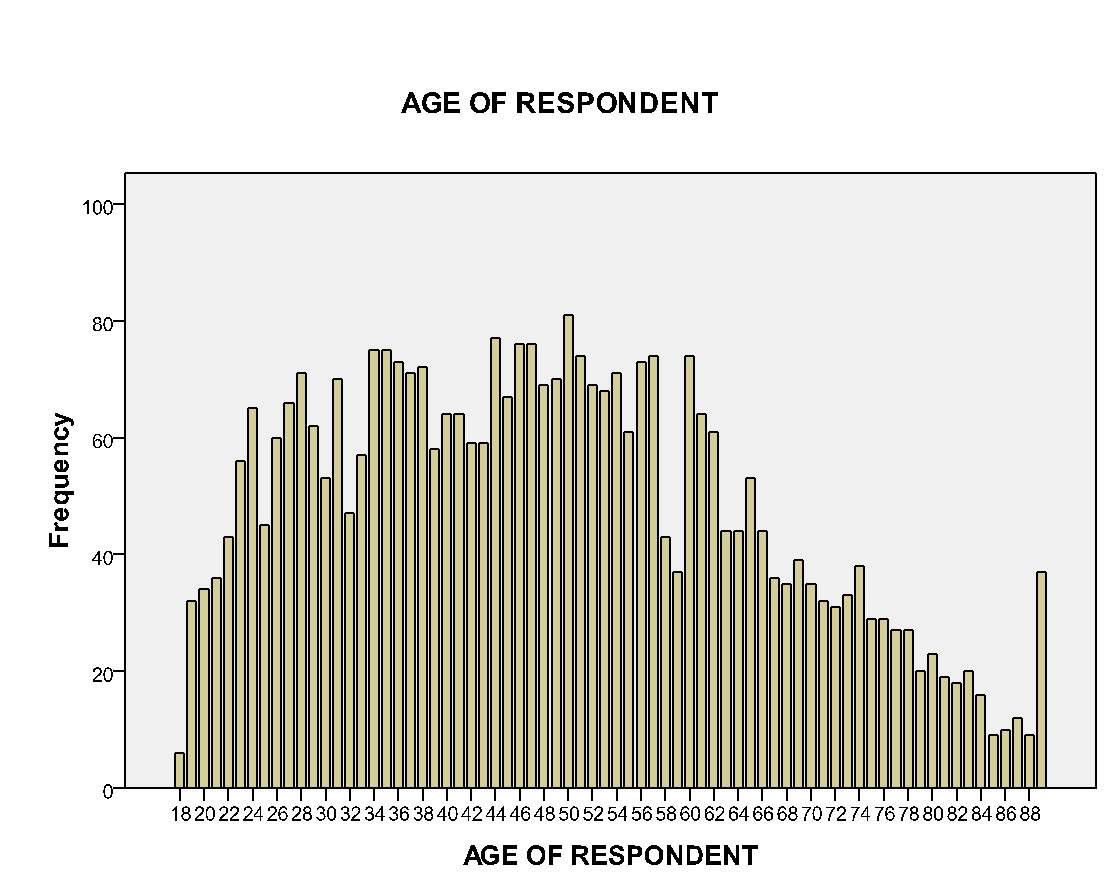Introduction
This paper is a report of a statistical analysis of two variables of a data set obtained from the General Social Survey (GSS) database. It includes the statistical assumptions of the test, SPSS syntax and output including the mean, median, mode, range, minimum, maximum and standard deviation of the two variables, and a chart describing that data.
Statistical assumptions of test
There are a couple of assumptions of the test. One assumption is that the populations represented by the sample data have specific traits and that these samples are obtained under specific conditions (General Social Survey, n.d.; Somekh & Lewin, 2005). It is also assumed that the data are sampled independently from normal distribution.
SPPSS syntax and output
Syntax
The SPSS syntax below is used to generate the standard measures of central tendency and dispersion, the frequency tables, and graphs (Green & Salkind, 2005).
FREQUENCIES VARIABLES=marital age
/STATISTICS=STDDEV RANGE MINIMUM MAXIMUM MEAN MEDIAN MODE
/BARCHART FREQ
/ORDER=ANALYSIS.
Statistics calculations
Frequency Tables
The following are the frequency tables for the variables marital status and age of respondents generated using SPSS and the GSS dataset.
Marital status
Age of respondent
Bar chart to describe the data
Age of respondent

The bar graph for age of respondent is a histogram. As Huizingh (2007) highlights, a bar chart is inappropriate for continuous variables because they often have several varying values. The highest number of persons (respondents) were aged 50 years, the least number of persons were 18 years old.
Marital status

The graph shows that married persons constituted the highest population, while separated persons were the least.
Conclusion
This report has utilized a data set obtained from the General Social Survey to show the standard measures of central tendencies and dispersions of the data. These statistical aspects were calculated using the SPSS application. The statistical assumptions of the test were mentioned and a bar chart was used to describe data.
References
General Social Survey. (n.d.), GSS 2008 Cross-Section and Panel Merged (2010). Web.
Green, S. B. & Salkind, N.J. (2005). Using SPSS for Windows and Macintosh: analyzing and understanding data, Vol. 1, Pearson/Prentice Hall, Upper Saddle River, NJ.
Huizingh, E. (2007). Applied statistics with SPSS. SAGE, London
Somekh, B. & Lewin, C. (2005). Research methods in the social sciences, SAGE, London.